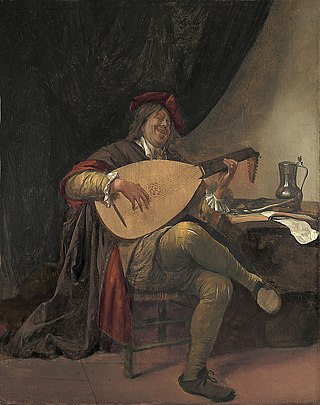
Jan Havickszoon Steen was a Dutch Golden Age painter, one of the leading genre painters of the 17th century. His works are known for their psychological insight, sense of humour and abundance of colour.

Dutch Golden Age painting is the painting of the Dutch Golden Age, a period in Dutch history roughly spanning the 17th century, during and after the later part of the Eighty Years' War (1568–1648) for Dutch independence.

Genre painting, a form of genre art, depicts aspects of everyday life by portraying ordinary people engaged in common activities. One common definition of a genre scene is that it shows figures to whom no identity can be attached either individually or collectively, thus distinguishing it from history paintings and portraits. A work would often be considered as a genre work even if it could be shown that the artist had used a known person—a member of his family, say—as a model. In this case it would depend on whether the work was likely to have been intended by the artist to be perceived as a portrait—sometimes a subjective question. The depictions can be realistic, imagined, or romanticized by the artist. Because of their familiar and frequently sentimental subject matter, genre paintings have often proven popular with the bourgeoisie, or middle class.
Events from the year 1660 in art.
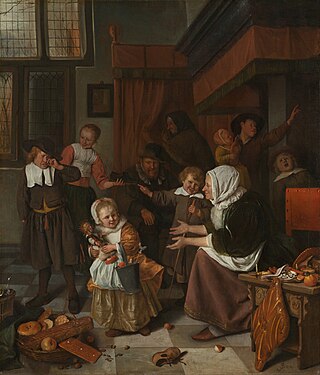
The Feast of Saint Nicholas is an oil-on-canvas painting executed c. 1665–1668 by Dutch master Jan Steen, which is now in the Rijksmuseum in Amsterdam. It measures 82 x 70.5 cm. The picture, painted in the chaotic Jan Steen style, depicts a family at home on December 5, the night celebrated in the Netherlands as the Feast of Saint Nicholas, or Sinterklaas.
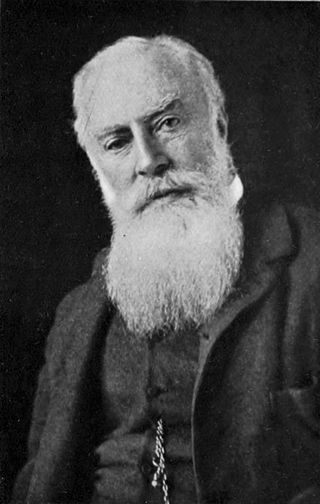
George Salting was an Colony of New South Wales-born British art collector. He had inherited considerable wealth from his father; Salting collected paintings, Chinese porcelains, furniture, and many other categories of art and decorative items. He left his paintings to the National Gallery, London, prints and drawings to the British Museum, and the remainder to the Victoria & Albert Museum, requesting that the collection be displayed intact rather than divided among the museum's departments.

The National Gallery is the primary British national public art gallery, sited on Trafalgar Square, in central London. It is home to one of the world's greatest collections of Western European paintings. Founded in 1824, from an initial purchase of 36 paintings by the British Government, its collections have since grown to about 2,300 paintings by roughly 750 artists dating from the mid-13th century to 1900, most of which are on display. This page lists some of the highlights of the collection.

Peeckelhaeringh, or Pekelharing, refers to an old Dutch word for pickled herring. Today it is best known as the name of a comic theatrical character who was the subject of a painting by Frans Hals.

The Lute Player is an oil-on-canvas painting from 1623 or 1624 now in the Louvre by the Haarlem painter Frans Hals, showing a smiling actor wearing a jester's costume and playing a lute.
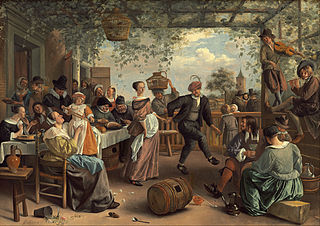
The Dancing Couple is an oil-on-canvas painting that was created by Jan Steen in 1663. It depicts a boisterous party with a dancing couple in the center. This painting is part of the Widener Collection, which currently resides in the National Gallery of Art in Washington, D.C. The setting of the painting is a kermis, which is a local village fair that several Dutch artworks referenced. Kermises were extremely popular in the Bruegel tradition. The Dancing Couple was one of the few paintings which started a new era in Dutch art. Paintings like these depicts a setting which was inspired by the rural working class of the Dutch people. This was a significant change for Dutch art as these settings highlighted a thriving period in their history. A new perspective was shown which changed the way traditional Dutch art was looked at as they focused more on the realistic rural working lifestyle and values of the Dutch people.

Franciscus van der Steen was a Flemish painter and engraver who was active in Vienna. He is now mainly known for his reproductive prints after master paintings and various publications containing portraits of prominent persons. No known paintings are currently attributed to him.
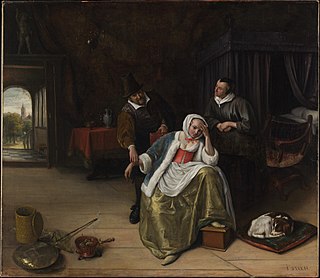
The Lovesick Maiden is a c. 1660 oil-on-canvas genre painting by Jan Steen. It shows a young woman suffering from love-sickness surrounded by her doctor and a maid-servant. It is in the collection of the Metropolitan Museum of Art.

The Quack Doctor is an oil-on-panel painting by the Dutch artist Gerrit Dou from 1652. It is held at the Museum Boijmans Van Beuningen, in Rotterdam.

Samson Mocked or The Mockery of Samson is an oil-on-canvas painting by Jan Steen, created c. 1670, now in the Museum of Fine Arts, Antwerp.
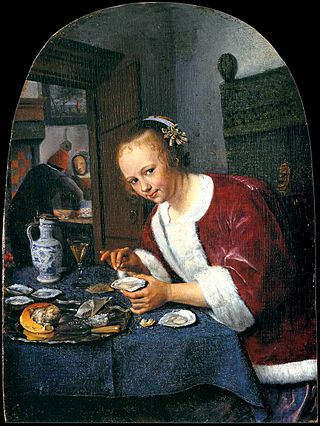
The Oyster Eater or Girl Offering Oysters is a small oil-on-panel painting by Jan Steen dating to c.1658–1660. Since 1936, it has been in the collection of the Mauritshuis in the Hague. It is a genre painting that demonstrates Steen's intricate style and use of domestic settings. It also shows Steen's use of symbolism with oysters to create a theme of earthly lust.

"As the Old Sing, So Pipe the Young", in Dutch, Soo voer gesongen, soo na gepepen, is an oil-on-canvas painting executed c. 1668–1670 by Dutch artist Jan Steen. It is in the collection of the Mauritshuis in The Hague. The painting is a celebratory holiday scene that depicts three generations of a Dutch family and serves as an allegory about parental examples, vice, and influence. This subject was painted thirteen times by Jan Steen and has also been known as The Cat Family, or Jan Steen's Family. Of the many renditions, the Mauritshuis version is considered to be the exemplar of the series. Its dimensions are 133.7 cm × 162.5 cm.

The Happy Family or As the Old Sing, So shall the Young Pipe is a 1668 oil painting by the Dutch artist Jan Steen. It is now in the Rijksmuseum in Amsterdam.

Wine is a Mocker is an oil-on-canvas painting by the Dutch artist Jan Steen, created in 1663–1664, now in the Norton Simon Museum in Pasadena, California. Its title is drawn from a biblical proverb.

Beware of Luxury is a 1663 oil painting by the Dutch painter Jan Steen, now in the Kunsthistorisches Museum in Vienna.

The Effects of Intemperance is an oil-on-panel painting executed c.1663–1665 by the Dutch artist Jan Steen. It was bought by the National Gallery, London in 1977 and is still in its collection.



















